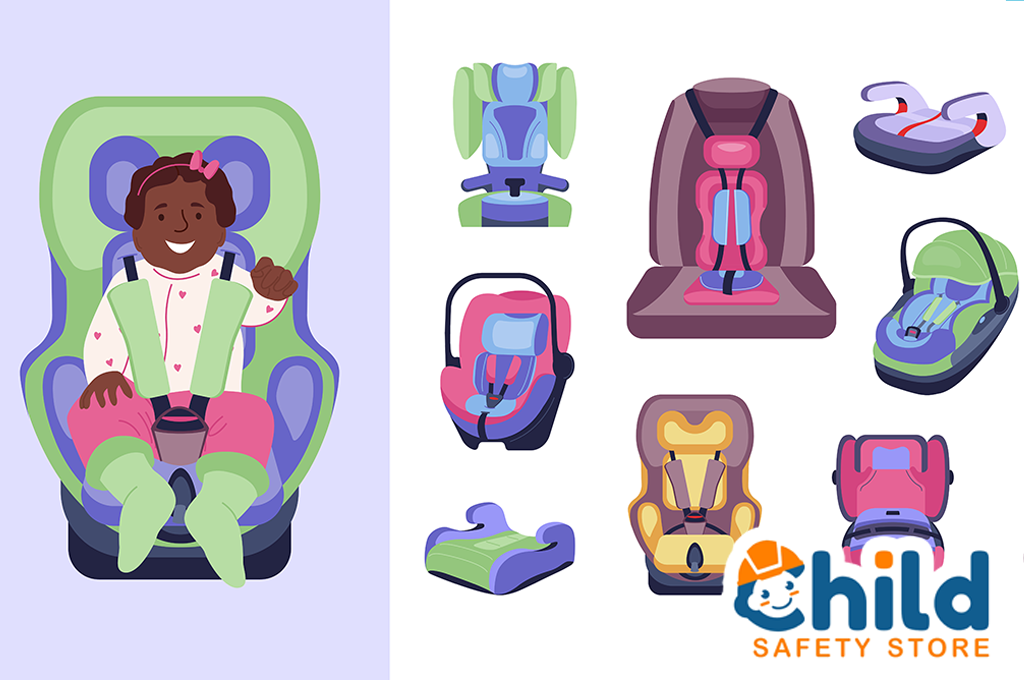
When to Switch to a Booster Seat: Child Car Safety
As parents and grandparents, keeping our children safe is our top priority, especially when it comes to traveling in vehicles. With various safety regulations and recommendations, it can be challenging to know when to transition our children from one car seat to another. One critical transition point is moving from a car seat to a booster seat. In this article, we'll delve into the factors to consider as well as the guidelines to follow so you can keep your child safe when you’re on the road.
Understanding the Need for a Booster Seat
Booster seats serve a crucial role in ensuring the safety of children as they transition from a car seat to using the vehicle's seat belt. Unlike car seats, which are designed with harnesses to restrain younger children, a booster seat serves a different function. These devices elevate the child, allowing the vehicle's seat belt to fit properly across their body.

The American Academy of Pediatrics (AAP) recommends using a booster seat until the child reaches a height of 4 feet 9 inches and is between 8 and 12 years old. At this point, the child is usually ready to use the vehicle's seat belt without a booster seat. However, the readiness to transition depends on various factors, not just age and height.
Booster Seat Factors to Consider
The Child’s Height and Weight
While age is a guideline, it isn’t everything. You see, kids often vary significantly in both size and development. Verify that your child meets the height and weight requirements specified by the booster seat manufacturer. Using a booster seat too early or too late can compromise your child's safety.
Seat Belt Fit
The primary purpose of a booster seat is to make sure that the vehicle's seat belt fits properly on your child. The lap belt should lie snugly across the upper thighs, not the stomach, and the shoulder belt should cross the middle of the chest and shoulder, not the neck or face. If the seat belt does not fit properly without a booster seat, your child is not yet ready to transition.
Basic Behavior and Development
Consider your child's maturity level and ability to sit properly in the vehicle without slouching, leaning forward, or playing with the seat belt. Children who are not yet able to maintain proper seating posture may be at risk of injury if they transition out of the booster seat too soon.
What Kind of Car Do You Drive?
Different vehicles have varying seat designs and belt configurations. Make sure that the booster seat you choose is compatible with your vehicle and that the seat belt fits correctly when installed.
Local Regulatory Guidelines
Familiarize yourself with the car seat and booster seat laws in your state or country. These regulations often provide specific guidelines on when children can transition to a booster seat and when they can start using the vehicle's seat belt.
Switching from a Car Seat to a Booster Seat
Once you've determined that your child is ready to transition to a booster seat, follow these steps to ensure a smooth and safe transition:
Make Sure to Choose the Right Booster Seat for Your Child
Select a booster seat that meets safety standards and is appropriate for your child's height, weight, and developmental stage.

Proper Installation is Critical
Follow the manufacturer's instructions for installing the booster seat correctly in your vehicle. It’s important to check that the seat belt fits snugly across your child's body when they are seated in the booster seat.
Education and Reinforcement: Kids Need to Understand
Teach your child the importance of wearing a seat belt properly and remind them to sit upright and avoid slouching or leaning while in the vehicle.
Regular Check-ups
It’s always important to schedule regular check-ups… but we’re not talking about the pediatrician! Instead, be sure to check the fit of the seat belt and the installation of the booster seat regularly. This will help make sure your child will continue to be safe while he or she grows up.
Transitioning from a car seat to a booster seat is a big milestone in a little one’s development. Remember, safety always comes first when it comes to our precious little ones on the road.
